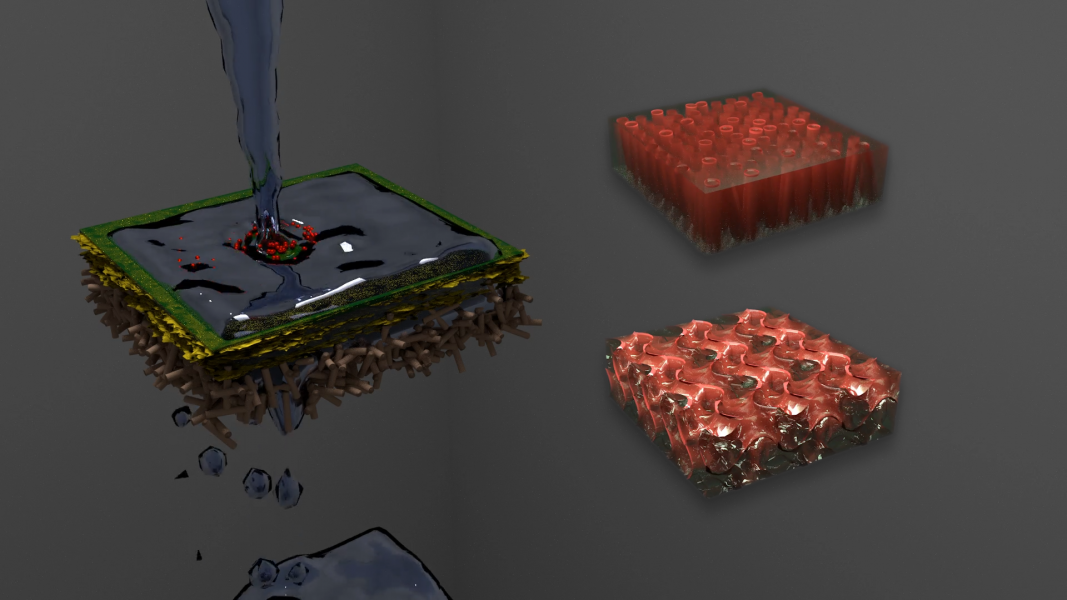Clean, fresh drinking water is a requirement for life, but the global supply of water is limited. Treatment of seawater or brackish water by filtration is one way to remedy this problem, and increasingly selective membranes for filtration are being developed to more efficiently remove water impurities.
In their paper in Advanced Science, Takeshi Sakamoto, Hiroki Nada, Masahiro Henmi, Takashi Kato, and co-workers design sub-nanoporous, selective membranes for water treatment using self-assembled liquid crystal (LC) monomers.
The researchers prepared wedge-shaped molecules with cationic ammonium, imidazolium, or pyridinium groups and polymerizable moieties. The structure of the cationic moiety and the alkyl chain length determines the LC phase that forms—bicontinuous cubic (Cubbi) or ionic columnar (Colh).
LC monomers were coated onto a porous substrate where they form Cubbi or Colh LC phases in thin-film states. Membranes with preserved 1D or 3D self-organized sub-nanopores were obtained by photopolymerization of these LCs.
The membranes prepared from one Cubbi compound and four Colh compounds exhibited over 60% rejection of NaCl in aqueous solution—the same level of NaCl rejection as with commercial nanofiltration membranes. Rejection rates for magnesium sulfate were lower than those of NaCl with the same membranes, confirming selective permeation of water molecules and solutes through the LC sub-nanopores. The efficient permeation of water and a higher rejection rate of NaCl than Mg(SO4) indicate that water is mainly transported through the 3D-interconnected sub-nanopores and 1D sub-nanopores that span the Cubbi and Colh membranes, respectively.
Molecular dynamics simulations were performed on the minimum energy structures of LC compounds with triethylammonium, diethymethylammonium, and trimethylammonium moieties. For all structures, water molecules have a larger self-diffusion coefficient, and hence higher mobility through the ionic sub-nanopores compared to sodium and chloride ions. The lower mobility of water molecules in trimethylammonium compounds is due to the smaller volume of vacant space in the ionic pores as a result of smaller quaternary ammonium moieties.
To find out more about these selective membranes for water treatment, please visit the Advanced Science homepage.

















